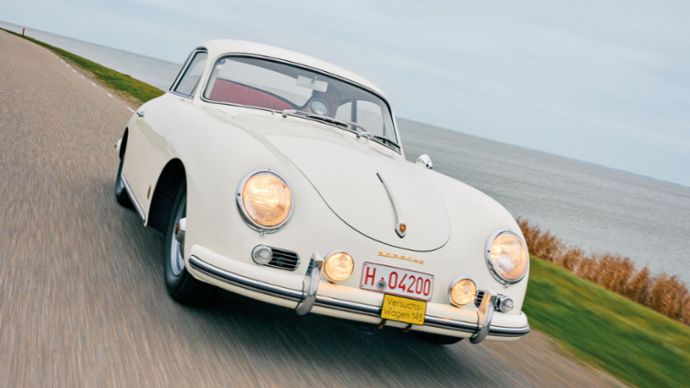Icon: Open-Top Driving
The first 911 Targa made its debut 60 years ago. Since then, the Targa bumper has become one of the most iconic components in Porsche history.
The Targa roll bar’s story is based on technological foresight, stylistic innovation, and a courageous solution to new challenges in car manufacturing. Even during development of the Porsche 901 – later the 911 – it was already clear that there should be an open-top version to complement the Coupé. Representatives of Porsche, Karosseriewerk Reutter, and Karmann got together in 1962 to discuss the different approaches. There were three variants up for debate: a classic soft top, a roadster version with a reduced frame, and a convertible with a fixed roll bar.
It was ultimately the third variant that proved to be the most convincing technologically. Even if the project was initially shelved due to limited capacity, the basic idea had been born. When more stringent regulations for open-top vehicles emerged in the US in the mid-1960s, Porsche was able to respond with a solution it had tucked away in a drawer: a safety convertible with fixed roll bar. The 911 Targa made its debut at the IAA in Frankfurt am Main in 1965 and the 912 Targa became available from the 1967 model year. Concealed under the body panel in brushed stainless steel, the steel bar offered structural safety without limiting open-top driving enjoyment. A removable section of roof above the front seats and a plastic rear windshield that could be unzipped and folded down offered a whole new level of flexibility. Porsche advertised with four variants – with the roof removed or in place and the rear windshield up or down. The company’s advertising slogan: “Now there’s a vehicle that combines the freedom of the convertible with the safety of a coupe.”
Its namesake was the Targa Florio, the legendary road race in Sicily that has been associated with spectacular Porsche successes over the years. Former Director of Sales Harald Wagner was the one who suggested the name “Targa” – and thus laid the foundation for a model line all of its own. Under the guidance of designer Ferdinand Alexander Porsche, the Targa bar emerged as a visible expression of Porsche’s typical fusion of form and function – and a genuine hallmark of the brand.
The principle was then applied to future models like the 914 and the Carrera GT. It has also proven to be a source of inspiration for other vehicle brands: a new take on open-top driving – safe and suitable for everyday use in any weather. The Targa has accompanied every generation of the 911 since its premiere. While the flexible rear windshield was replaced with a fixed panoramic pane of glass in 1969, the basic principle remained the same for the first three generations of the 911: fixed roll bar with a removable, folding roof. A technological and stylistic modification occurred in generation 993 in 1995. With a glass roof featuring longitudinal supports rather than a transverse bar, the vehicle was closer to the Coupé, but still unmistakably a Targa.
The Targa bar celebrated its comeback in 2014 in the seventh generation of the 911 (991). The wraparound rear windshield without C-pillar and the roll bar invoked the original concept from 1965. The classic silhouette combined with modern technology in the form of a fully electric roof system. The choreography is breathtaking as the expansive pane of glass and bar open and close at the press of a button and the soft top disappears behind the rear seats.
Openness with substance, sportiness with style: the Targa embodies both engineering artistry and design history. A spark of emotion on wheels.




